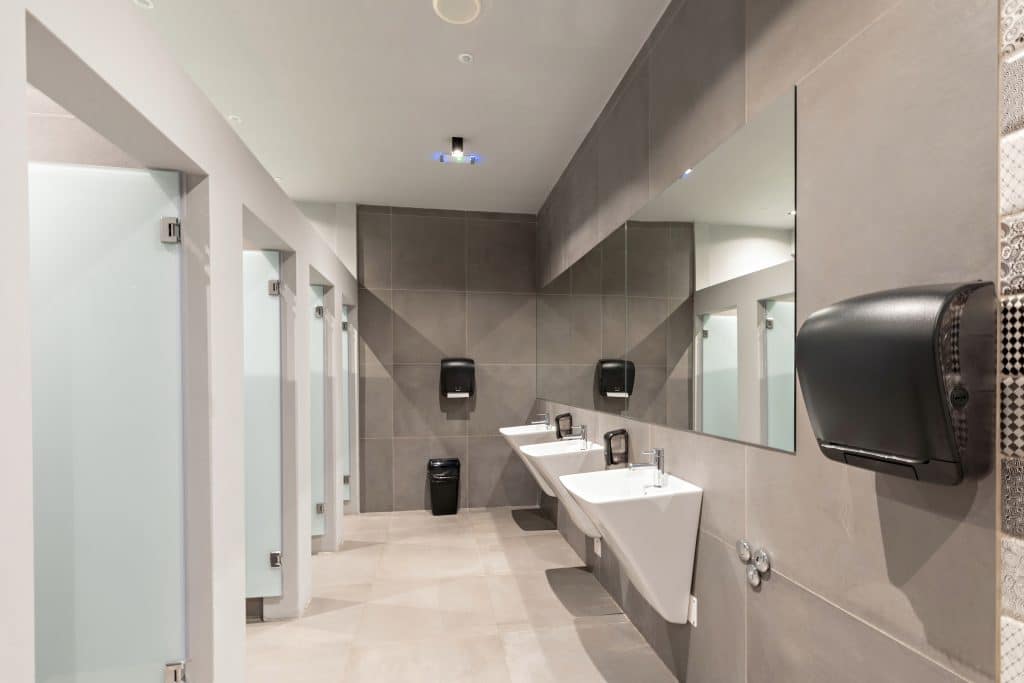When most people think about fire alarm coverage, they picture detectors in corridors, call points by exits, and sounders in busy rooms. But one space is often forgotten, the toilets.
It might seem minor, but if your fire alarm can’t be heard clearly in the toilets, it could pose a serious risk to life. In this post, we’ll explain why this matters, what the law and standards say, and how you can check if your building is up to scratch.
Why Audible Coverage Is Crucial
The primary purpose of a fire alarm system is to warn people as early as possible so they can evacuate safely.
If someone is in the toilets, especially in a cubicle with the door shut, and they can’t hear the alarm:
-
They may remain unaware of the fire until it’s too late
-
They could become trapped or delayed in evacuating
-
Other staff or fire wardens may wrongly assume the building is clear
For high-risk or high-occupancy buildings (such as schools, offices, hotels, and care facilities), this becomes even more important.
What the Standards Say (BS 5839-1)
The key British Standard for fire alarm design in commercial buildings is BS 5839-1:2017. It outlines how systems should be installed to ensure audible and visual coverage is sufficient throughout the building.
According to the standard:
“The sound pressure level of the alarm signal should be at least 65 dB(A) or 5 dB above any ambient noise lasting more than 30 seconds.”
In places where a person may be isolated or behind closed doors, like a toilet cubicle, the standard recommends:
-
Additional sounders to ensure the minimum decibel level is reached
-
Consideration for deaf or hard-of-hearing occupants, who may rely on visual alarms or vibrating alerts
In other words, if your toilet cubicles are too quiet during a fire alarm, your system may not be compliant.
Factors That Affect Audibility in Toilets
-
Solid doors and tiled surfaces can muffle the alarm sound significantly
-
Extractor fans or hand dryers may add competing background noise
-
Distance from the nearest sounder may reduce decibel levels
-
Acoustic dead zones can form in enclosed spaces or corners
Even if your main rooms are loud enough, toilets can easily fall outside the range of effective alarm coverage unless specifically checked.
Do All Buildings Need Toilet Coverage?
Not necessarily, but many do.
Whether fire alarm sounders are needed in the toilets depends on:
-
Size and layout of the building
-
Occupant type and number
-
Whether toilets are used by the general public or employees
-
The overall fire strategy of the premises
Public buildings, workplaces, schools, and premises open to vulnerable people should treat toilet audibility as essential.
For small low-risk offices, it might be acceptable for the alarm to be faint, but this should always be based on a proper fire risk assessment and advice from a competent installer.
How to Check If Your Toilets Are Covered
The easiest way to check is during your next fire drill:
-
Have someone enter each toilet or cubicle during the test
-
Shut the door and confirm whether the alarm is clearly audible
-
Note whether extractor fans or other noise sources interfere
-
Record the findings in your fire safety logbook
If in doubt, ask a competent fire alarm engineer to measure the sound pressure levels in each part of the building, including toilets, plant rooms, and isolated spaces.
What If It’s Not Loud Enough?
If your toilets fail the test, there are several solutions:
-
Install a dedicated sounder inside or just outside the toilets
-
Use visual indicators like flashing beacons (especially in accessible toilets)
-
For hotels or residential buildings, consider vibrating pillows or deaf alerts
-
Adjust the fire alarm panel’s configuration if zones or volumes need updating
Make sure any work is carried out in line with BS 5839-1 and properly commissioned.
Legal Considerations
Under the Regulatory Reform (Fire Safety) Order 2005, the Responsible Person must:
-
Provide adequate warning of fire to all occupants
-
Ensure the alarm system is appropriate for the risks
-
Regularly test and maintain the fire detection and alarm system
If an inspector finds that parts of your building don’t receive adequate alarm coverage, including toilets, you could be at risk of enforcement action or liability in the event of an incident.
Final Thoughts
If a fire alarm can’t be heard in the toilets, it’s not doing its job. While it might seem like a minor oversight, it can create dangerous blind spots, especially in buildings with public access, lone workers, or vulnerable users.
For expert advice on fire protection and prevention measures, contact Martyn Young Fireproofing Consultancy on 07585 896648


